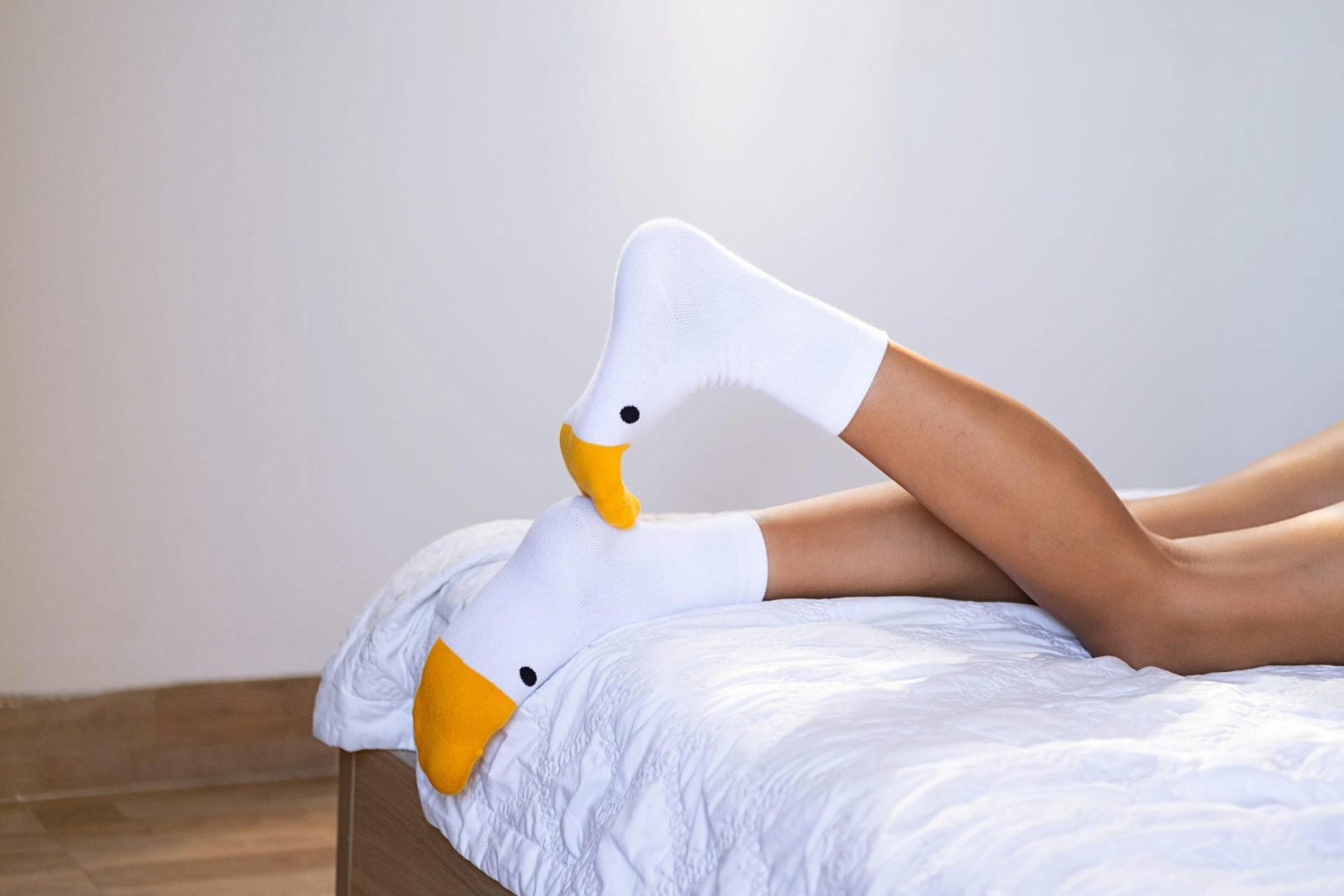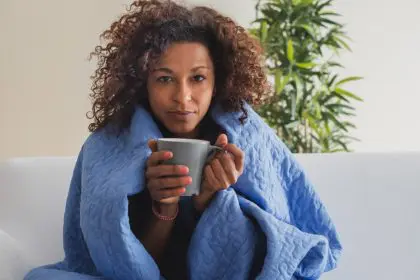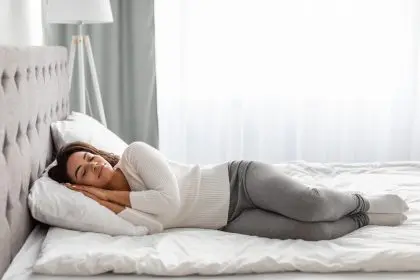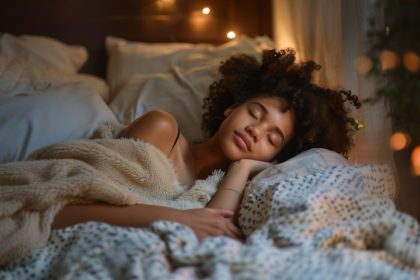The quest for better sleep leads many to explore various remedies, from meditation apps to expensive mattresses. Yet one of the simplest, most affordable solutions might already be in your dresser drawer. Wearing socks to bed—a practice some find strange while others swear by it—has genuine scientific merit for improving sleep quality. This practice influences several biological processes that contribute to more restful nights and more energetic mornings.
The science of warming cold feet
The connection between foot temperature and sleep quality stems from fundamental thermoregulation processes in the human body. During the evening hours, the body naturally prepares for sleep by lowering its core temperature. This temperature drop signals the brain to increase melatonin production—the hormone responsible for sleep onset.
Cold feet, however, can interfere with this natural temperature regulation. When extremities remain cold, blood vessels constrict, reducing heat release and potentially delaying the core temperature drop necessary for quality sleep. Socks create a microclimate around the feet, maintaining warmth that promotes vasodilation—the widening of blood vessels—which helps dissipate heat from the core and accelerates the natural cooling process.
This improved temperature regulation not only helps people fall asleep faster but also contributes to fewer nighttime awakenings. Studies examining sleep latency (the time taken to fall asleep) show that warm feet can reduce this period significantly, sometimes by as much as 15 minutes compared to cold-footed counterparts.
Enhanced circulation benefits
Wearing socks to bed provides notable circulation benefits that extend beyond temperature regulation. Throughout the day, gravity works against venous return, particularly in the lower extremities. The gentle compression and warmth provided by socks can counteract this effect, supporting better blood flow back to the heart during sleep.
This improved circulation has sleep-specific benefits, particularly for those with naturally cold extremities or circulatory issues. Better blood flow ensures consistent oxygen and nutrient delivery to tissues throughout the night, potentially reducing nighttime cramping and discomfort that might otherwise disturb sleep.
The circulation enhancement particularly benefits people who experience Raynaud’s phenomenon—a condition characterized by reduced blood flow to extremities when cold or stressed. For these individuals, wearing socks overnight can prevent painful cold feet episodes that might otherwise cause sleep disruptions.
The brain-feet connection
An intriguing aspect of wearing socks to bed involves the neurological signaling between feet and brain that influences sleep quality. The feet contain numerous nerve endings and are richly supplied with thermoreceptors that detect temperature changes. These sensors continually communicate with the brain, influencing its perception of overall body status.
When feet remain cold during the night, these thermoreceptors send alerting signals to the brain. From an evolutionary perspective, cold extremities historically indicated potential environmental threats, keeping parts of the brain in a heightened state of vigilance. This subtle alertness can prevent achieving the deepest, most restorative sleep stages.
Warm feet send different signals altogether, communicating safety and comfort to the brain. This neurological communication helps maintain sleep continuity through the night, with fewer disruptions from the vigilance systems that might otherwise respond to cold extremities. This neurological aspect explains why some people report not just faster sleep onset but also deeper, more continuous sleep when wearing socks.
Hormonal influences on sleep quality
Wearing socks to bed influences hormone production and regulation in ways that benefit sleep architecture. The temperature changes facilitated by warm feet affect not only melatonin but other sleep-related hormones as well.
The temperature regulation supported by wearing socks helps optimize cortisol rhythms—the stress hormone that follows a circadian pattern, naturally decreasing in the evening and early sleep hours. When the body struggles with temperature regulation, cortisol levels may remain elevated, interfering with deep sleep phases.
Additionally, the improved circulation from wearing socks may influence levels of vasopressin, a hormone involved in regulating nighttime trips to the bathroom. Better circulation can support optimal kidney function throughout the night, potentially reducing disruptions from nocturia—nighttime urination—that fragments sleep for many adults.
Protection against disrupted sleep cycles
The cumulative effect of wearing socks to bed manifests most significantly in sleep cycle protection. Human sleep follows a pattern of alternating between REM (rapid eye movement) and non-REM stages, with each complete cycle lasting approximately 90 minutes. Disruptions to these cycles, even brief ones that don’t cause full awakening, can diminish sleep quality.
Temperature fluctuations represent a common cause of these subtle disruptions. When feet grow cold during the night, the body may shift briefly into lighter sleep stages as it attempts to address the temperature imbalance. These shifts, while not causing full consciousness, prevent achieving or maintaining the deep, slow-wave sleep stages vital for physical restoration.
Wearing socks creates temperature stability that protects these vulnerable sleep cycles. The consistency in foot temperature throughout the night means fewer micro-arousals and sleep stage shifts, allowing for more complete sleep cycles and higher proportions of restorative deep sleep.
5 practical tips for implementing this sleep strategy
- Choose the right sock material for optimal sleep benefits. Natural, breathable fibers like cotton, wool, or bamboo allow necessary air circulation while providing warmth. Avoid synthetic materials that might cause overheating or excessive sweating, which can paradoxically disrupt sleep. Merino wool socks offer exceptional temperature regulation, remaining comfortable across various bedroom temperatures.
- Consider compression levels based on individual needs. Light compression socks may benefit those with mild circulation issues, while others might find non-constrictive socks more comfortable. The ideal sock should feel comfortable without leaving impression marks on the skin after removal. Those with serious circulatory conditions should consult healthcare providers before using compression socks overnight.
- Practice proper foot hygiene when adopting this habit. Change into clean, dedicated sleep socks rather than wearing day socks to bed, preventing bacteria and fungus transfer to bedding. Washing feet before donning sleep socks maintains skin health and prevents potential issues from moisture trapped against skin overnight.
- Incorporate socks into a comprehensive sleep routine rather than viewing them as a standalone solution. Pairing sock-wearing with other established sleep hygiene practices—consistent sleep schedule, reduced evening screen time, appropriate bedroom temperature—creates synergistic benefits. The ritual of putting on sleep socks can also serve as a useful sleep cue, training the brain to recognize this action as a prelude to rest.
- Experiment with different temperature strategies to find the optimal approach. Some people benefit from warming socks briefly before putting them on, while others prefer gradually warming cold feet through sock insulation. Those who tend to overheat during sleep might benefit from wearing socks only during the initial sleep onset period, removing them once core temperature drops.
For many people, implementing this simple strategy leads to noticeable improvements in both subjective sleep quality and objective measures like reduced nighttime movement and more consistent sleep cycles. While not a cure-all for serious sleep disorders, sock-wearing represents a low-risk, high-reward intervention worth trying for those seeking better rest.
The next time sleep proves elusive, the solution might be as simple as reaching for a comfortable pair of socks. This accessible approach to better sleep requires no prescription, carries minimal cost, and offers substantial potential benefits—a rare combination in the world of sleep remedies.
















